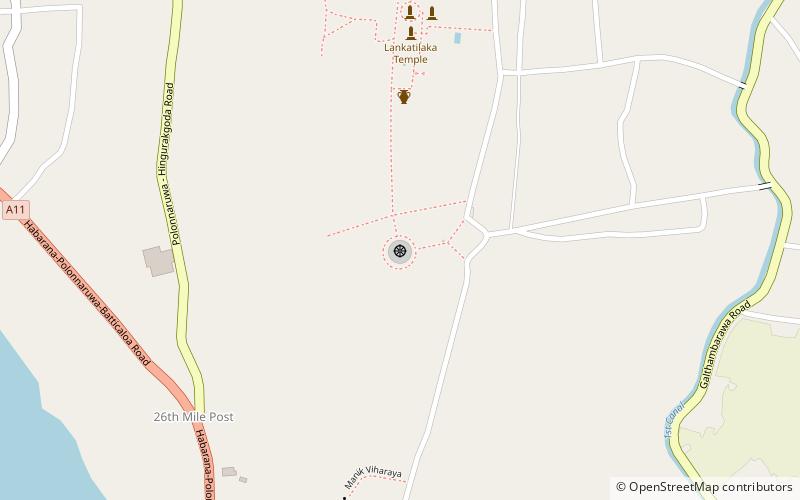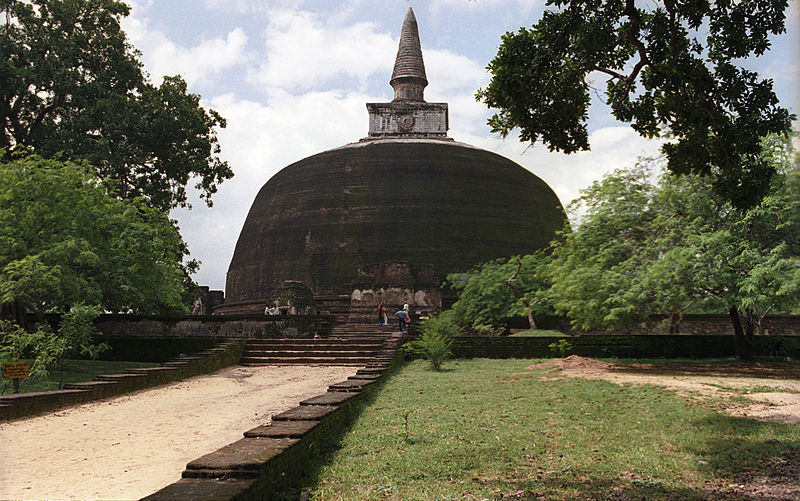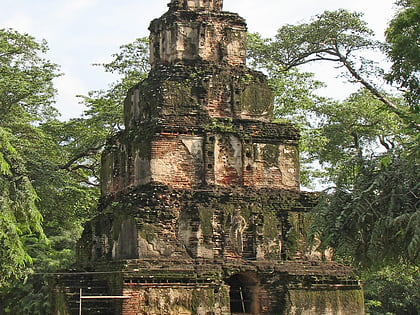Rankoth Vehera, Polonnaruwa


Facts and practical information
Rankoth Vehera stands as a majestic testament to the ancient city of Polonnaruwa, one of Sri Lanka's most significant historical sites. This magnificent pagoda, which ranks as the fourth largest stupa in the country, is a pinnacle of Buddhist religious architecture and a symbol of the city's rich cultural heritage.
Constructed during the reign of King Nissanka Malla (1187-1196 AD), Rankoth Vehera holds a revered place in the heart of Polonnaruwa's archaeological park. Its name, meaning 'Golden Pinnacle Stupa,' reflects the grandeur that it once possessed. The stupa's original purpose was to serve as a place of worship and veneration, housing sacred relics and providing a focal point for the Buddhist community.
The pagoda's design follows the traditional Sinhalese stupa form, featuring a vast, bell-shaped dome rising to an impressive height of 55 meters. It is built entirely of brick, and the dome is surrounded by a paved courtyard and a series of concentric, decorative walls. The stupa's base is adorned with intricate carvings and stonework that provide a glimpse into the skilled craftsmanship of the era.
Rankoth Vehera's scale and the precision of its construction are a testament to the advanced engineering skills of the ancient Sinhalese builders. The structure has stood the test of time, enduring centuries of weathering and historical tumult, yet it remains a powerful symbol of the city's past glory.
Today, Rankoth Vehera is a focal point for both local and international tourists, drawing those who are interested in history, architecture, and spirituality. Visitors to Polonnaruwa's archaeological park can explore the stupa at their leisure, absorbing the tranquility and grandeur of this ancient site. The pagoda continues to be an active place of worship, with devotees offering flowers and prayers, maintaining the living cultural traditions of Sri Lanka.
Polonnaruwa
Rankoth Vehera – popular in the area (distance from the attraction)
Nearby attractions include: Gal Vihara, Satmahal Prasada, Nissanka Latha Mandapaya, Vatadage.





